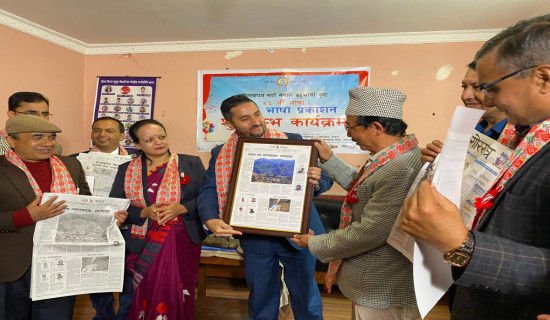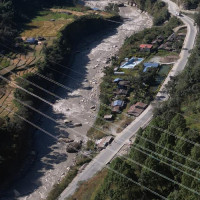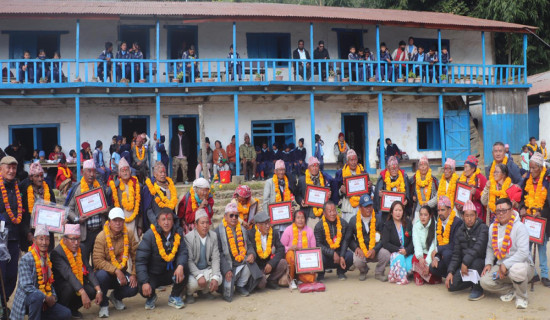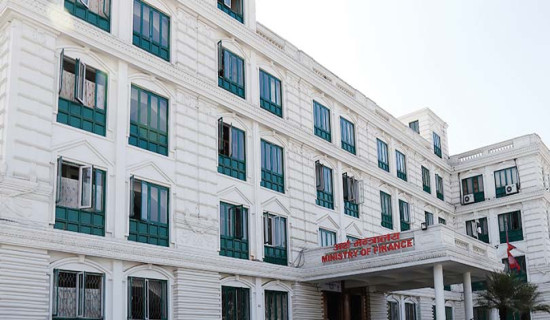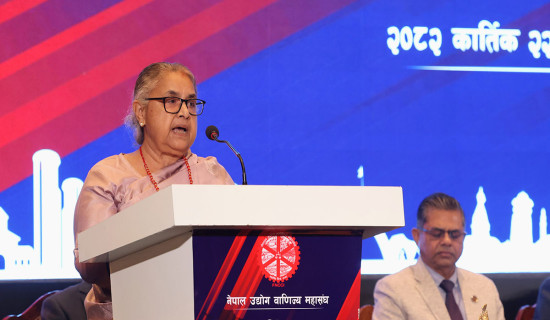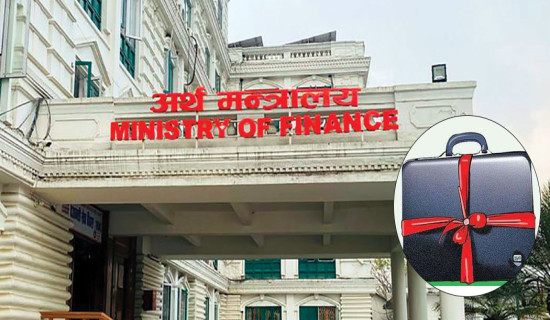- Tuesday, 2 December 2025
Biratnagar industries see whopping rise in production costs
Kathmandu, Nov. 3: More than 29 per cent industrialists in the eastern industrial city, Biratnagar, said that the production cost per unit has increased unnaturally – by more than 75 per cent – due to national and international factors.
According to a sample survey of 21 industries in and around the capital city of Province 1, about 71 per cent of the industries saw an increase in per unit production cost by less than 25 per cent while 29 per cent by 75 to100 per cent.
It concluded that increase in bank interest, currency inflation, hike in the price of petroleum products in the international market, increasing value of the dollar, and higher cost of keeping the goods in stock had all contributed to the increment.
The survey conducted by the Chamber of Industries Morang (CIM) had included industries from food, textile and garments, shoes, printing, plastic and packaging materials, chemical and sanitary, metallic base and non-metallic base like cement and wood, hotel and service, and other manufacturers.
Likewise, owing to the contraction in the market, almost all the industries have reduced their production due to the reduction in the demand for their products which has forced them to spend extra money to store the produced items.
Production despite no demand
Meanwhile, large industries that produce construction materials have said that they have to continue producing even though there is no demand in order to manage their human resources. If they shut down the industry, there will be a challenge in managing human resources, they say.
Compared to last year, in the first two months of this fiscal year 2022/23, about one third of the construction industries participating in the survey said that the demand has slumped by more than 50 per cent. The market for the products of almost all other types of industries has decreased by 25 to 50 per cent, reported the survey.
However, the garment industries, which made about 5 per cent of the total participation and which have been busy stitching the uniform for the term-police hired for the upcoming elections, said that the market demand has gone up.
Similarly, food producing industries have said that there has been a decrease in market demand due to open borders and cheaper price of goods across the border which sent the consumers to the bordering markets in India.
Money recovery period doubled
“There is a lack of liquidity in the market and purchasing power of consumers has decreased. As a result, there is no money with the retail business. The banks have been charging high interest rate in the already dear loans,” stated the survey.
The lack of liquidity in the market has increased the money recovery rate from the market to 120 days from the earlier period of 60-90 days cycle.
With the results of the survey and recommendations, a delegation including the representatives of CIM, Morang Merchant Association (MMA) and
Confederation of Nepalese Industries (CNI), Province 1 called on the Governor of the Nepal Rastra Bank (NRB), Maha Prasad Adhikari.
Stating that it is certain that the rate of inflation, which has reached more than eight percent, will increase further due to the abnormal increase in bank interest rates and the economy will shrink further, the delegation urged the central bank to find innovative ways to manage liquidity in the financial system.
Governor pledges solution
It has become indispensable for the regulatory body to take strict measures by means of appropriate financing tools including the measure of limiting the bank interest rate to one digit in order to reduce the production cost of the industrial sector, read a joint statement issued by the associations.
In response, Governor Adhikari
assured the business delegation that the central bank would take initiative to maintain balance in the overall financial system. The delegation included CIM President Suyesh Pyakurel, MMA President Nabin Rijal, and CNI Province 1 President Bhim Ghimire.
The survey aimed at studying the impacts made by the liquidity crisis and hike in the bank interest rate on the industrial sector. The survey was conducted in the second week of October 2022.



